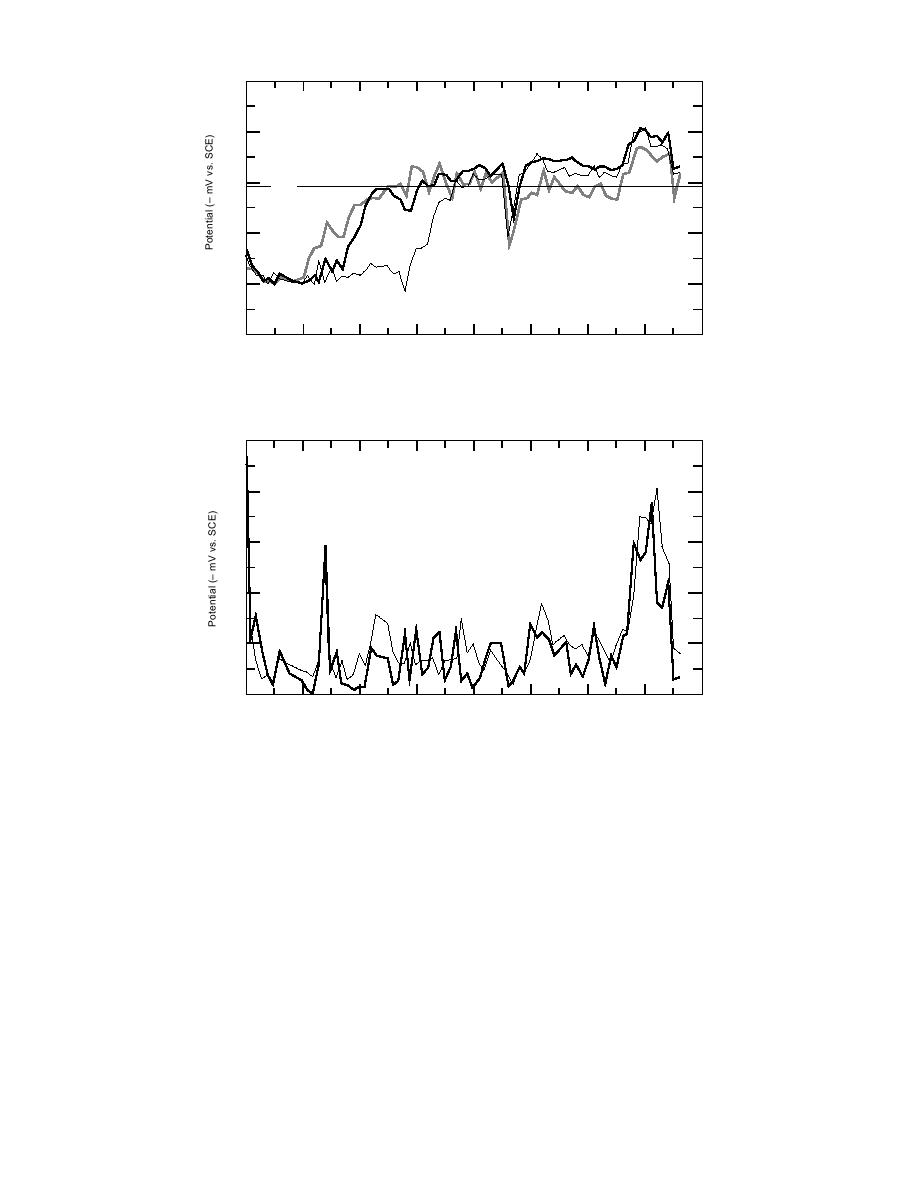
500
400
Pozzutec 20
@ 60 mL/kg
Corr.
300
Line
Reference
200
Pozzutec 20
@ 100 mL/kg
100
0
10
20
30
40
50
60
70
80
Weeks
Figure 3. Lollipop specimens submerged half-height in 3% sodium chloride solu-
tion.
200
160
120
Reference
80
Pozzutec 20
@ 60 mL/kg
40
0
10
20
30
40
50
60
70
80
Weeks
Figure 4. Lollipop specimens submerged half-height in deionized water.
cured at 5C (23F) at the same rate as that in
Task 2: Corrosion potential
control concrete cured at 5C (40F). As can be
The lollipop test results show that mortars
seen, the 7-, 14-, and 28-day strengths of the high
treated with 60 mL/kg (90 fl oz/cwt) of Pozzutec
dosage concrete cured at 5C (23F) were signifi-
20 are practically identical to admixture-free mor-
cantly below that of the ACI standard for 5C
tar. Figures 3 and 4 are graphs of the average
(40F) concrete. Strength gain at 10 and 20C
potentials from three specimens over a 1 1/2-year
(14 and 4F) was even lower (see Fig. 2). This
period. There is no exact potential identifying the
does not necessarily mean that the Pozzutec con-
initiation of corrosion. ASTM C 876 identifies po-
crete has been damaged by freezing, as this con-
tentials more positive than 200 mV vs. copper
crete displayed a remarkable recovery in strength
sulfate reference electrodes as passive or noncor-
by 56 days when brought back to room tempera-
rosive behavior. Potentials between 200 and
ture. It does suggest, however, that a new admix-
350 mV are an indication that corrosion has initi-
ture would have to be developed to fully satisfy
ated, and potentials more negative than 350 mV
the low-temperature goal of this project.
indicate a high probability of corrosion. Since our
8



 Previous Page
Previous Page
